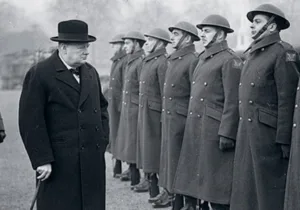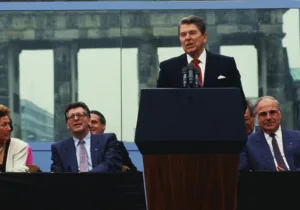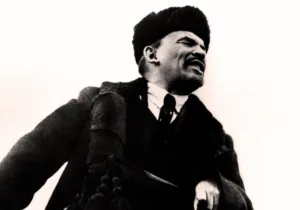April 3rd, 2023 marks the 75th anniversary of Congress passing the European Recovery Act, better known as the Marshall Plan after U.S. Secretary of State George C. Marshall. The passing of this huge foreign aid bill, in tandem with the establishment of NATO and the Truman Doctrine’s emphasis on containment, laid the foundation for U.S. foreign policy in the decades ahead and, ultimately, victory in the Cold War.
The best way to summarize what the European Recovery Act’s program (European Recovery Program or ERP) sought to achieve is by looking at the Act’s official title:
An Act to promote world peace and the general welfare, national interest, and foreign policy of the United States through economic, financial, and other measures necessary to the maintenance of conditions abroad in which free institutions may survive and consistent with the maintenance and stability of the United States.
“An Act to promote world peace …” Many believed that the dire conditions in Europe at the end of the First World War directly contributed to the rise of aggressive fascism in Italy and Germany and that weak institutions allowed Japan’s military to run rampant in the Far East. Unlike the vision of Wilson’s 14 Points, which called for dramatic democratic change but was accompanied by a series of Versailles-like treaties that pummeled the losers, the Marshall Plan was designed to provide aid to former friends and foes alike – even the Soviet Union was offered aid. The U.S. position was that hungry people and derelict industries were a recipe for revolution, famine, and aggression.
The ERP recognized that world peace was tied up with events in Europe and that European instability had a way of destabilizing global affairs. The Act’s title tells us very clearly that peace was in the “general welfare, national interest, and foreign policy” objectives of America. It was in the U.S. interest to avoid seeing Communism take over Germany and other major industrial powers, as Hitler and Mussolini had after World War I. It was in the U.S. interest for Europeans to not only feed but also defend themselves. Moreover, it was in the U.S. interest to revitalize global trade, reopening markets for U.S. goods. Just as Europe’s depression of the 1920s was in part responsible for the Crash of 1929, the U.S. must avoid a repeat of those conditions twenty years later.
U.S. intervention in post-war European affairs was a dramatic shift in U.S. foreign policy. Ever since George Washington warned of “entangling alliances” in his Farewell Address, the U.S. had harbored deep skepticism of tying itself down in treaties of mutual aid and defense pacts. Of course, the U.S. was not fully isolationist: the Monroe Doctrine told European governments to stay out of the Western Hemisphere and was the justification for the U.S. to closely scrutinize European involvement in Latin America (although in the nineteenth century the U.S. largely avoided military engagements in the region).
But, when it came to involvement in the Great Power politics of European global rivalries, the U.S. largely stayed out, avoiding security treaties and promptly returning home after providing the decisive force needed to end World War I.
True, the Marshall Plan was not a defense treaty, but it did occur in the context of U.S. peacemaking efforts in China, the Truman Doctrine, and, within just a few months, the Berlin Airlift and the establishment of NATO and SEATO. Thus, the Marshall Plan was an emphatic statement that the U.S. national interest – U.S. peace and security – were directly tied to the well-being of Europe’s citizens.
America’s vision was larger than its own security: securing the conditions for “free institutions” to survive and thrive was at the heart of the Marshall Plan. This is a recognition that, immediately following the end of the war in 1945, the Soviet Union had brazenly reneged on agreements and destabilized governments across Eurasia. The Soviets balked on a pledge for Poland to hold free elections. The Soviet Union slow-tracked the removal of troops from oil-rich Iran. An Iron Curtain of Soviet troops and their lackeys controlled Eastern and parts of Central Europe. The Soviet Union supported Communists and fifth columnists across Europe, causing immense political instability in France, Greece, Italy, and elsewhere. Indeed, the near collapse of Turkey and Greece almost bankrupted Britain and so in 1947 the U.S. stepped in with Truman Doctrine aid ($400 million).
In sum, President Truman and his closest advisors realized that the “maintenance and sustainability of the United States” required a more aggressive posture to protect the well-being of European citizens, free institutions, and the global economy. This was a policy that Christian Realist Reinhold Niebuhr called “enlightened self-interest.” In 1947, considering the dire situation of Britain’s economy, Niebuhr reflected on the nature of the national interest and the fact that altruistic giving of billions of dollars to former allies was unlikely:
The economic aid which is required could not be a matter of pure generosity. Nations as nations are incapable of such generosity. We could rise to such a policy only if we were wise enough to understand that generous, interest-free loans would not merely save the economy of Western Europe but would also insure our own economic health.
But, by the Spring of 1948, the U.S. government caught up with Niebuhr and realized that its values and interests were intertwined, just as morally satisfying foreign policy should be. The Marshall Plan went on to provide $13.3 billion (equivalent to $173 billion today) to more than a dozen countries over four years. Successor foreign aid programs provided additional support in the years ahead.
In 1987 Ronald Reagan, reflecting on the legacy of the Marshall Plan, wisely noted that the first thing that it “generated hope where there was none.” Hope was the indispensable element for European recovery in terms of morale, politics, and enterprise. Reagan went on, “The second and most important goal of the Marshall plan was to provide incentives for Europeans to find common ground, to bring down the political barriers which stifle economic activity and growth.”
Hope and common ground, combined with a long-term vision of America’s welfare and national interest. It was a huge investment and was not guaranteed to be successful. Yet, the approach went on to secure the freedom and vitality of not just individual countries, but the Western alliance that defeated Soviet Communism. Reagan concluded with words worthy of President Truman or General Marshall, words worthy of our attention today: The greatest challenge for those of us who live in freedom is to recognize the ties of common interest that bind us, to prove wrong those cynics who would suggest that free enterprise and democracy lead to shortsighted policies and undisciplined self-interest.







 Live in the DC area? Sign-up for Providence's in-person events list!
Live in the DC area? Sign-up for Providence's in-person events list!